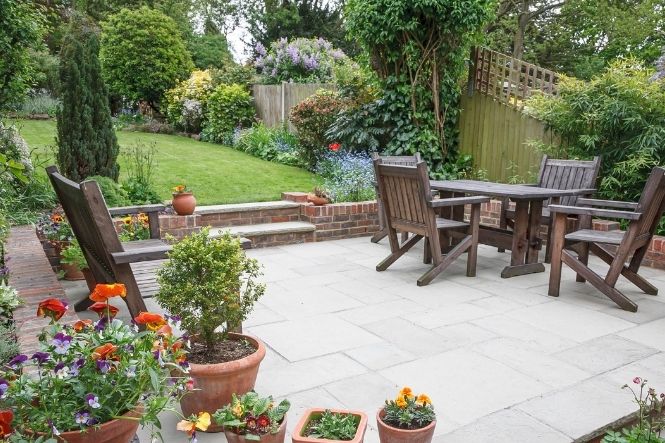If you’ve decided that a hard patio surface is right for you, then your choices are down to material, size, colour, texture, and cost. There’s a wide range of stone, clay or concrete paving available for patios. For this article we’re going to assume that wet laid surfaces, such as Concrete and Tarmac, have been ruled out as they’re not that attractive in a garden.
The first thing to do is to decide why you’re building the patio, in other words, what are you going to use it for? If you’re laying something down because you’re doing up a property as a development project, you’ll want to get a sale through as quickly as possible, so you’ll obviously look at price more than anything else. But if you want to use it for barbecues and enjoying your garden for the next 20 years, then you’re more likely to spend on quality, and pay more attention to looks, too.
Concrete, Clay or Stone?
Laying Concrete Slabs (or Flags) can look good initially but cheap ones will fade because the colour comes from dye, and they are not pigmented all the way through. The textures that you can get range from smooth, which might be a liability for kids and elderly people, to very convincing imitations of real stone at the top end. Beware with some of these textured surfaces though, as it might get annoying not being able to find somewhere level to put your garden furniture and again, it could trip people up if it’s extremely rough.
The same things apply with clay blocks, although even the smoothest clay finish will probably have enough grip to prevent it becoming a trap for the unsteady. Clay is generally more expensive than concrete but the colouring is natural and goes all the way through the block, being a factor of the pigments in the clay mix used and the firing process. This means that clay bricks age gracefully and will still look good long after most concrete blocks have faded.
Stone is long-lasting and will not fade, but is costly and there’s less choice of colour and texture. Even when well worn though, as in churches that are centuries old, it still exudes quality. Of the three materials, stone will be the most expensive, and may well be tricky to lay as the sizes can’t be as accurate as man-made materials. But even that is beginning to change now, with small brick-sized blocks coming onto the market in the last few years that are very uniform in quality and lower in price, too.
Get the Details Right
The patterns and mixes of colours that you can try are endless, regardless of the material you settle on. Look at your house and garden and try to pick out colours that will complement. There’s nothing wrong with having bright colours and shapes as long as they don’t jar with the home.
If you are going to need to put in steps to get from one level to another, pay attention to the edges of the slabs you are choosing. Some cheaper concrete ones have very unnaturally sharp and smooth edges, and something a little more random might look better.
As for patio construction, while it’s true that the more you pay attention to the foundations, the better the patio will look, and the longer it will last, it’s also true that you don’t have to put as much effort into the foundations as a drive that is going to take the weight of cars. The digging depth can generally be about half that of a drive of the same material, and the blocks or flags themselves do not have to be as thick as carriageway spec items.
But if you’re making the patio for you and your family to enjoy for the years to come, the more effort you put into planning the design and choosing your materials, the better it will turn out in the long run.

